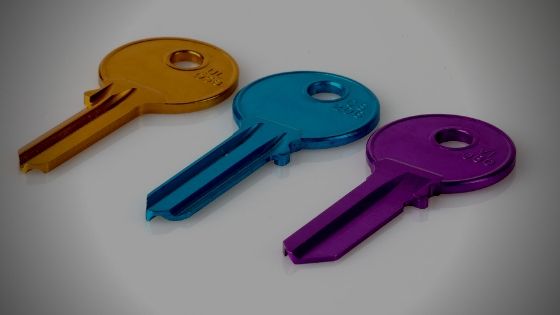It’s finally happening, you’ve landed your first chatbot client!
You did your initial call, learned about their business, and found out what’s working for them and what their challenges are.
You did a stellar job explaining the value of chatbots and why they should work with you to build one. And the client was sold!
You’re floating on the ceiling from excitement, basking in the glow of your achievement, when the helium starts to leak out of that balloon.
And suddenly you realize, “Oh no…now I have to deliver.”
Because if you want to keep them as a retainer client, or use them as a case study, you have to drive results.
And that’s scary. What if you set up the campaign and it totally bombs?
So you’re staring at your computer, stuck at ground zero, with your new-client joy fading fast.

Here’s what you need to know. You don’t actually have to start from ground zero.
In fact, you probably shouldn’t start from ground zero, because chances are you’ll be recreating the wheel.
Nick Julia, one of our Bot Academy graduates who runs a successful chatbot agency and co-leads our weekly training calls, recently hopped on Facebook Live to explain what to do instead.
Here’s what he recommends.
Start by looking at what people are already doing, identify what’s working, and determine how you can improve on that and personalize it for your client.
In this article, we’re going to walk through this exact process for a hypothetical client to show you what it looks like.
The Client:
Suppose your client is a registered dietitian and health coach. Her clients commit to a one-on-one, 6-month program where they completely overhaul their nutrition and lifestyles to overcome health challenges.
She acquires new clients by booking 10-minute discovery calls to evaluate their health and explain the transformative benefits of her program.
Challenge: Too many unqualified leads
She’s wasting lots of time on calls with people who don’t have any major health challenges (so aren’t willing to commit to the program) or aren’t willing to invest in her premium offering.
Goal: Pre-qualify leads and book more consultations
Let’s look at how you can apply the 3-step research method to her business challenge.
Step 1: See What Other People Are Doing
First, you want to see what’s already out there to get your creative juices flowing and provide a potential framework for your own chatbot.
Keep in mind that you may need to cast a fairly wide net.
In the grand scheme of things, chatbots are still fairly new and some verticals have been faster to adopt them as a marketing channel than others.
There may not be a ton of chatbots in the dietitian/health coaching industry, but there are lots of bots designed to qualify leads and book appointments.
So keep an open mind about how specific features and messaging may translate across industries.
With that in mind, here are a few strategies for finding relevant chatbot examples.
Check for Case Studies and How-To Articles
Chatbot platforms, chatbot marketers, and people who teach chatbot building all want to brag on their client successes and show off their expertise. Use this to your advantage!
Search “[industry] chatbot case study” or “[goal] chatbot how to” and you’ll likely find examples of chatbots in action.
You can even specifically search the blogs of chatbot platforms like ManyChat and MobileMonkey, or chatbot resources like Bot Academy.
Case studies are great because you know the featured bot is actually driving results (or else there wouldn’t be a case study about it).
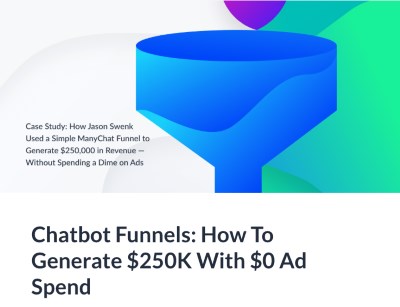
These writeups often have helpful stats, an overview of the campaign setup, and include the client name. You can use that to find their Facebook page and interact with the bot yourself.
How to’s may not show you the results of a particular campaign, but they do show you the actual nuts and bolts of the setup. This is great because if you see a particular tactic you like, you can easily implement it.
For example, if you browse our blog you’ll see we have step-by-step, how-to articles about qualifying leads on autopilot with chatbots and booking lead gen appointments with chatbots, which would both be helpful in this scenario.
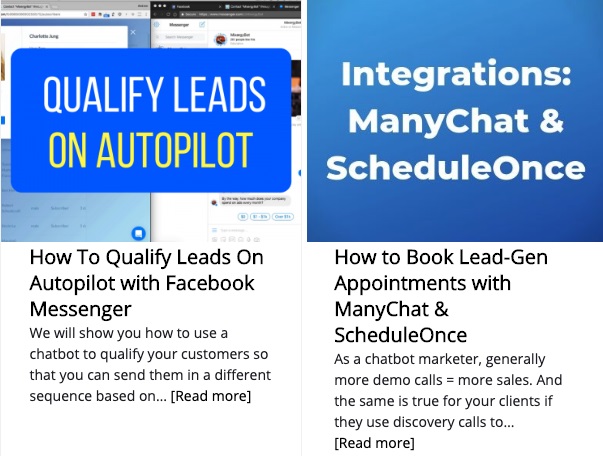
Look for Templates
There are a few companies that offer free chatbot templates geared toward specific industries or marketing goals. (MobileMonkey and Chatfuel both offer a selection and ManyChat allows you to create and share your own).
While these templates won’t be tailored to your client’s brand voice and are often pretty basic, they can be a helpful jumping off point.
You can find these on Google pretty easily by searching “[goal] chatbot template” or “[industry] chatbot template”.
Ask Your Communities
Are you a member of any online or in-person tribes where you can connect with fellow chatbot builders or digital marketers?
Hint: if you’re not already, make sure you’re a member of the free Bot Academy Facebook Group, which is just for chatbot builders.
Ask these communities if anyone has seen chatbots in your client’s industry or bots built to achieve their specific goal. Don’t just ask for the great examples, bad examples can be just as helpful because they help you figure out what NOT to do!
Look at Competitors
If your client is in an industry that adopted Messenger marketing early, their competitors may have chatbots you can check out.
If you didn’t ask in your initial call with the client, inquire who their competitors are and visit their websites and Facebook pages to see if they have chatbots.
Another great option is to use Facebook’s Audience Insights tool to see what other Facebook pages are likely to be relevant to your client’s followers (most of them will be competitors).
To find this information, go to https://www.facebook.com/ads/audience-insights/. You’ll immediately see a pop-up asking you to choose your audience, select “People connected to your Page”.
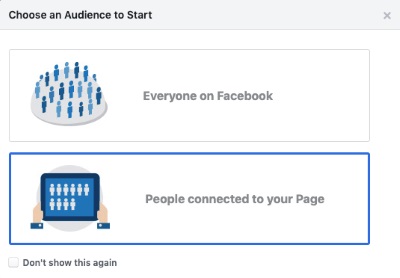
Then, it will jump you down to the Pages section on the left-hand side where you can type in your client’s Facebook page.
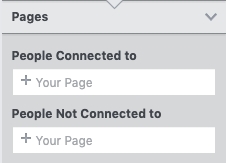
After you type in the page name, choose Page Likes from the top menu and scroll down to the Page Likes section.
This will show you a list of pages that your audience is also likely to follow.
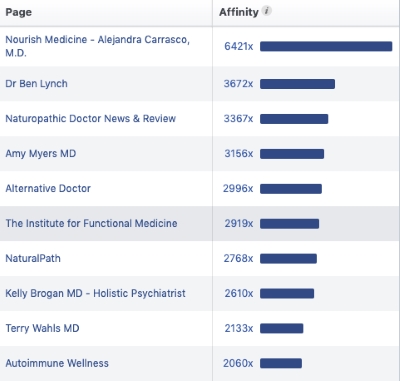
Go Beyond Chatbots
Remember, chatbots are simply another way to talk to customers. So something that works on another platform can also work in chat, with some minor tweaking where needed.
For example, does your client’s competitor have a really effective way to qualify leads that you can replicate in a Messenger sequence?
Remember to check websites, social media platforms, and email for inspiration and ideas!
Step 2: Identify What’s Working
Ok, now that you’ve collected examples from your client’s industry or for their use case, it’s time to pinpoint what’s working (that you might want to implement) and what isn’t (that you’ll want to avoid).
As you interact with the chatbot examples you found, ask yourself these questions.
- Is the messaging compelling enough to keep you interacting with the bot? What makes it compelling?
- Is it easy to find the information you’re looking for or to take the next step? How is the sequence or menu structured to make it easy to navigate?
- How does the chatbot move you through the sales funnel? Is it easy to learn more or take action? Are you dropping off at any point?
- What types of questions is the chatbot asking? What makes them engaging? Are there any barriers to answering them?
- What other tools or software are used? Are they integrated seamlessly or are they jumping between platforms?
Here are a few takeaways from examples we found in our hypothetical scenario.
What’s Working
One-Tap Questions to Qualify Leads
One of the examples we found was from Antonio Thompson, a Bot Academy graduate who offers chatbot and Facebook ad services.
While he’s in a totally different industry than our hypothetical client, his services are priced at a premium and he needs to qualify and segment leads based on their challenges and ability to invest.
His bot does this really quickly and with minimal work from the user, thanks to simple questions where users simply click one button to answer.
- Do you fit the customer avatar?
![]()
- What service are you interested in?
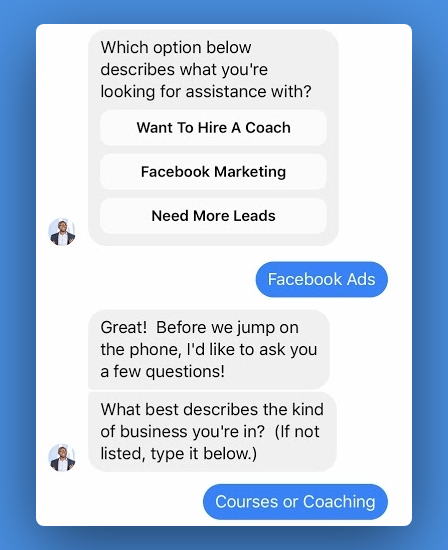
- Are you qualified?
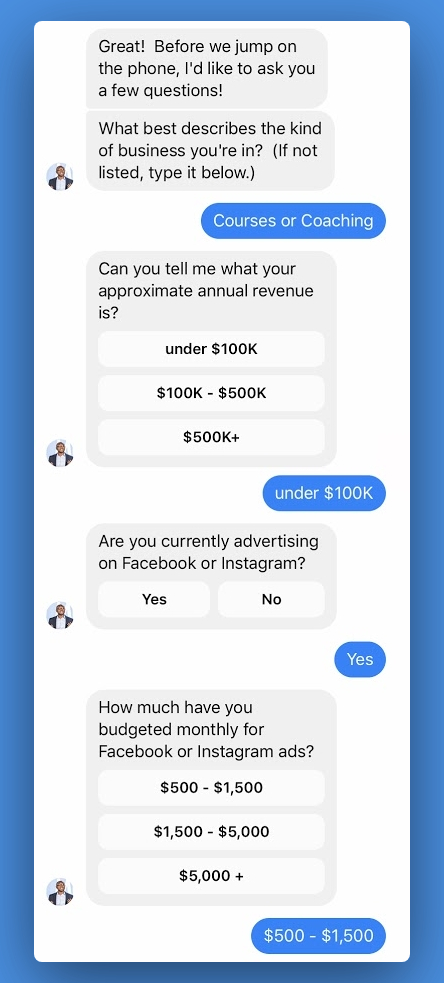
Within a few seconds, his chatbot has confirmed if the user fits his customer avatar, learned what service they’re interested in, and qualified them based on revenue and ad spend.
Clear Lead Quality Questions
When looking at the competition, we found another company in the health coaching space that also books free consultations with potential clients. While they do not have a chatbot to help book these calls, they do have a form on their website where users can schedule.
And one of the questions they ask is:
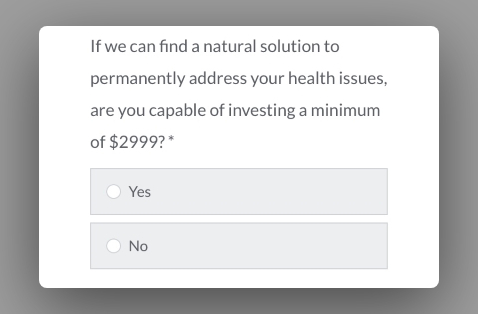
This makes it extremely clear to the potential client what will be required in this program, while also reminding them why the investment is worth it.
Automated Booking for Streamlined Conversions
We also looked at a how-to from a Bot Academy graduate, Vincent Tandiono. He shared a tutorial with the Bot Academy community showing how to integrate ManyChat and ScheduleOnce for automated appointment booking.
We loved it because it creates as few steps as possible for a prospect to book a discovery call, leading to higher conversion rates and a streamlined user experience.

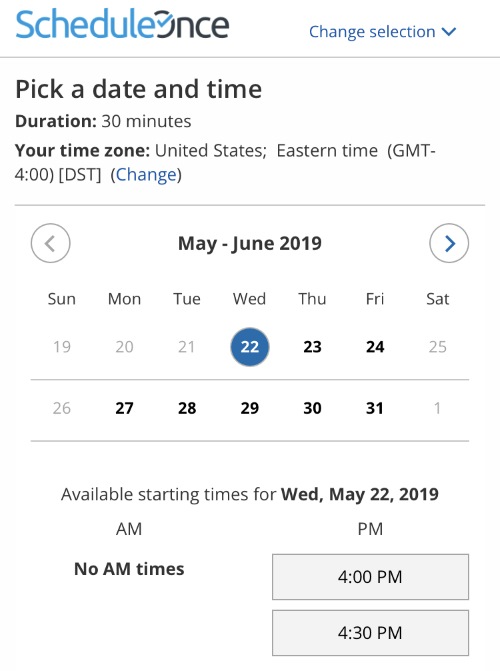
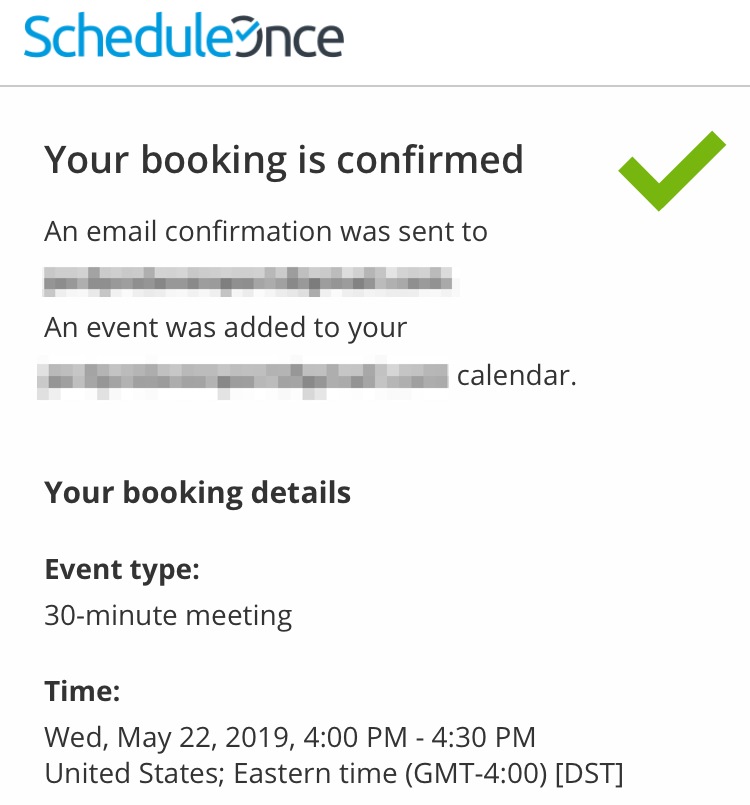
And, since he shared his exact setup process, you can easily replicate the experience in your own campaign.
What’s Not Working
Manual Outreach Instead of Automatic Booking
When we searched free chatbot templates we found one to help personal trainers book free consultations. Adjacent industry and same use case as our client, score!
It has an opening message that reinforces the transformation the trainer is selling with a fun gif. So far so good.
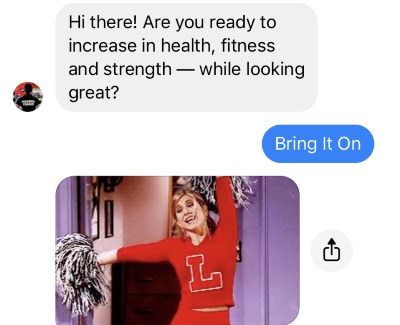
Then it asks a series of questions with short messages to learn more about the user’s health and fitness level.
But, after you answer the questions you have to wait for the trainer to reach out to book your consultation, rather than being able to book it yourself.
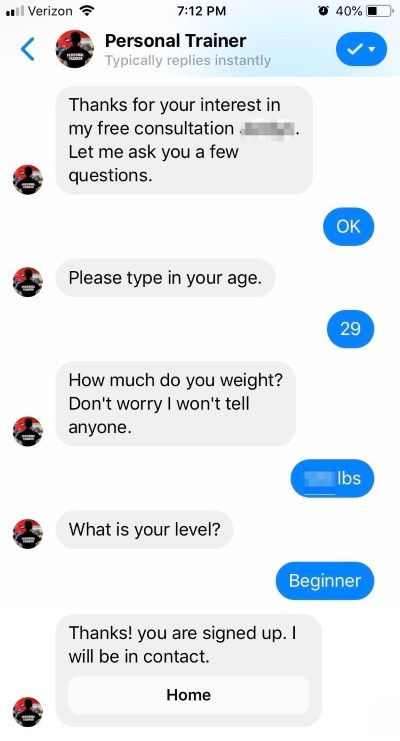
This is a definite drawback because if too much time passes before someone reaches out, the user might lose interest or book with someone else.
Too Many Qualifying Questions
Earlier we mentioned the qualifying investment question on the website of a competitor. While that part landed in the “what’s working” bucket, overall the appointment booking form did not.
Want to know why? It has a whopping 17 questions, not including contact details!
That’s a pretty high barrier to conversion and a lot of the questions ask for similar information, which users may find annoying.
Step 3: Implement & Customize
Now that you have a list of features and strategies to help achieve your client’s goal and a list of what to stay away from, it’s time to design your campaign!
Remember the endgame here – to achieve the goal set by your client (and in turn, achieve your own goals of retainer revenue, case studies, etc.)
For our scenario, we want to book more discovery calls with pre-qualified leads for our client’s health coaching program.
So we’ll implement the features from our examples that best achieve this:
- One-tap qualifying questions to segment users based on health challenges and willingness to invest
- Automated discovery call booking with integrated technology
But how can we go beyond that to ensure users are primed, ready, and excited to book discovery calls?
In the Bot Academy course, we show you how to implement the “teach, build relationships, and convert” approach in your chatbot campaigns.
You can learn exactly why and how this formula sets you up for success in the program, but here’s an overview of why each step is important.
- Teach so you provide value and establish credibility.
- Build relationships so you establish trust and personal connection.
- Convert so you and your client make money.
Here’s how you might apply that approach here to finish mapping out your first campaign.
Teach
- Does the client have a free health guide or another educational lead magnet you can offer?
- What about a quiz you can utilize on the front-end to subscribe users to your main sequence?
Build Relationships
- Where can you use photos to connect better with the audience?
- Are there personal stories and anecdotes you can weave into the messaging?
Convert
- What about people who are qualified but don’t convert? How can you follow up with them?
- What happens after someone converts? Is there a secondary goal?
Use the answers to these questions to finish architecting your campaign.
This is a great place to involve the client as well. Remember, she knows her customers and her brand best, so be sure to leverage her expertise.
And you don’t have to fit it all in the first time around! Start with the essential features most aligned with the end goal – pre-qualifying questions and automated booking.
With that as a solid foundation to drive results, you’ll have many more months to upgrade and improve your bot for your new retainer client 😉.

Andrew's recommendation
Want to learn more about the power of chatbots and building your own business? Join our free webinar to discover exactly how to build your first bot and land clients.

